
Cassia is a genus of flowering plants in the legume family, Fabaceae, and the subfamily Caesalpinioideae. Species are known commonly as cassias. The genus includes 37 species and has a pantropical distribution. Species of the genera Senna and Chamaecrista were previously included in Cassia. Cassia now generally includes the largest species of the legume subtribe Cassiinae, usually mid-sized to tall trees.

Phyllota is a genus of flowering plants in the legume family, Fabaceae. It includes 11 species of shrubs native to temperate southeastern and southwestern Australia, in the states of New South Wales, Queensland, South Australia, Victoria, and Western Australia. They inhabit open woodland and forest, mallee woodland, and heathland, from coastal to semi-arid and montane areas.

Aotus is an Australian genus of flowering plants, within the legume family Fabaceae. Aotus species, together with other species of the tribe Mirbelieae, are often called golden peas because of their distinctive small yellow flowers. They are endemic to Australia, occurring in all states except the Northern Territory. Aotus are evergreen species. Some are widely cultivated by gardeners for their ornamental value.

Leptosema is a genus of flowering plants from the legume family Fabaceae. According to the Australian Plant Census, species of Leptosema occur in the Northern Territory, Western Australia, South Australia and Queensland.

Dipteryx is a genus containing a number of species of large trees and possibly shrubs. It belongs to the "papilionoid" subfamily – Faboideae – of the family Fabaceae. This genus is native to South and Central America and the Caribbean. Formerly, the related genus Taralea was included in Dipteryx.

Pterodon emarginatus is a Brazilian legume of the Cerrado. Widely distributed in the west of Minas Gerais and in Goiás, Brazil, the fruit oil of this plant is used to deter skin penetration by Schistosome cercariae.

Platymiscium is a genus of flowering plants in the family Fabaceae, and was recently assigned to the informal monophyletic Pterocarpus clade within the Dalbergieae. It has a Neotropical distribution, from northern Mexico to southern Brazil. Platymiscium is the only genus in the family with opposite leaves in all its species. Its wood has various uses, mostly for constructions and furniture. It's wood is also sometimes referred to as Granadillo, Macacauba, Macawood, Hormigo, or Orange Agate.

Leptolobium is a small Neotropical genus of plants in the family Fabaceae, with 12 species currently recognized. With the exception of Leptolobium panamense, which occurs in tropical forests from northwestern South America to Mexico, all species of Leptolobium are restricted to South America and most diverse in Brazil. Most Leptolobium species have been traditionally included in AcosmiumSchott (Fabaceae), but both genera have been recently distinguished based on several vegetative and reproductive traits.

Isotropis is a genus of flowering plants in the family Fabaceae. The genus is endemic to Australia.
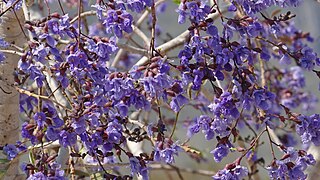
Bowdichia is a genus of flowering plants in the legume family, Fabaceae. It belongs to the subfamily Faboideae. The genus includes two species native to tropical South America and Costa Rica.
Clathrotropis is a genus of flowering plants in the family Fabaceae. It includes 7 species native to northern South America, ranging from Peru to Colombia, Venezuela, the Guianas, and northern Brazil. The genus belongs to subfamily Faboideae.

Cranocarpus is a genus of flowering plants in the legume family, Fabaceae. It includes three species native to northern and eastern Brazil. It belongs to subfamily Faboideae, and was recently assigned to the informal monophyletic Pterocarpus clade of the Dalbergieae.
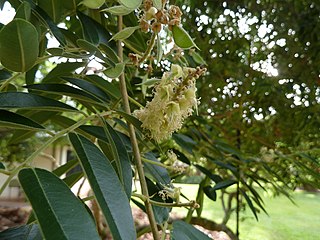
Cyathostegia is a genus of flowering plants in the legume family, Fabaceae. It belongs to the subfamily Faboideae. It contains two species native to Peru and Ecuador. It is often considered to be a monotypic genus containing only Cyathostegia mathewsii. Some sources include Cyathostegia weberbaueri.
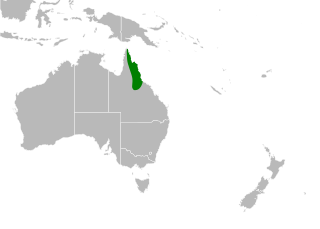
Lamprolobium is a genus of flowering plants in the legume family, Fabaceae. It includes two species endemic to Queensland. It belongs to the subfamily Faboideae.
Latrobea is a genus of flowering plants in the legume family, Fabaceae. It includes eight species of shrubs endemic to Southwest Australia. Typical habitats include forest, woodland, and heathland on sandy soils and swampy areas in higher-rainfall areas of the far southwest. The genus belongs to the subfamily Faboideae. The plant is named after Charles Joseph La Trobe.
Monopteryx is a genus of flowering plants in the family Fabaceae. It includes three species of trees native to the Amazon rainforest of northern South America, ranging through parts of Colombia, Venezuela, northern Brazil, and French Guiana. They grow in non-inundated lowland tropical rain forest on sandy soil. The genus belongs to subfamily Faboideae. Members of this genus produce hydroxypipecolic acids in their leaves.
Nissolia, the yellowhoods, is a genus of lianas in the legume family, Fabaceae. It includes 32 species native to the tropical and subtropical Americas, ranging from Arizona and Texas through Mexico, Central America, and South America to northern Argentina. It belongs to the subfamily Faboideae, and was recently assigned to the informal monophyletic Adesmia clade of the Dalbergieae.

Plagiocarpus is a genus of flowering plants in the legume family, Fabaceae. It includes seven species of shrubs or subshrubs native to northern Australia, from the Kimberley region of Western Australia to western Queensland. Their habitats include seasonally-dry tropical to subtropical woodland, bushland and thicket, shrubland, and grassland, typically on sandstone or sandy soils. It belongs to the subfamily Faboideae.
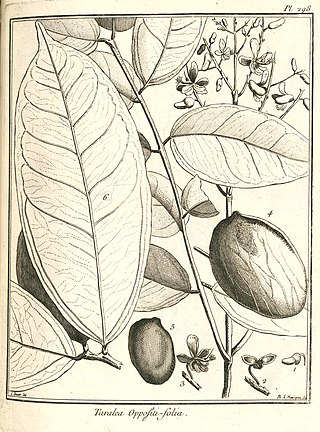
Taralea is a genus of flowering plants in the family Fabaceae. It includes five species of trees and shrubs native to northern South America, ranging from Colombia and Peru to Venezuela, the Guianas, and northern and northeastern Brazil. Habitats include riverine and inundated tropical lowland rain forest, seasonally dry forest, woodland, and marsh. One or two species are also found in montane forest and in open moist woodland and scrub on sandstone-derived soils. It belongs to subfamily Faboideae.
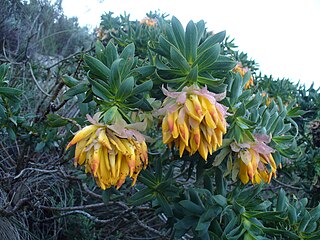
Liparia is a genus of flowering plants in the legume family, Fabaceae. It includes 20 species native to the Cape Provinces of South Africa. It belongs to the subfamily Faboideae.
















